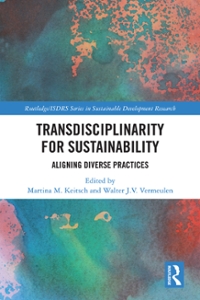Microeconomics.
QUESTION 4 Players 1 and 2 have agreed to play tennis tomorrow. However, this will be possible only if at least one of them shows up early to claim the court. Each player is either a morning person or a night person. Each player knows his own type, and, regardless of his own type, assigns probability to the other player being a morning person. Each player chooses between showing up early (E) to claim the court or showing up late (2); the choices are made independently and simultaneously. The basic payoffs are as follows: (1) if either player shows up early, then playing is possible, and each player receives a payoff of 4. (2) if both show up late, then they will not be able to play and each player receives a payoff of 0. In addition to those payoffs, a morning person who shows up early also receives an extra payoff of 1, whereas a night person who shows up early suffers a payoff penalty of -3. Thus, for example, if they are both night persons and Player 1 shows up early, while Player 2 shows up late then Player 1's payoff is 4-3 = 1 and Player 2's payoff is 4. All these payoffs are von Neumann-Morgenstern payoffs. (a) Describe this situation using states and information partitions. With every state associate the relevant game. (b) Find the common prior. (c) Use the Harsanyi transformation to convert the representation of part (a) into an extensive- form game. (d) (d.1) How many pure strategies does Player 2 have? (d.2) Write down one possible mixed strategy for Player 1, which is not a pure strategy. (d.3) Write down one possible behavior strategy for Player 1.(c) Use the Harsanyi transformation to convert the representation of part (a) into an extensive- form game. (d) (d.1) How many pure strategies does Player 2 have? (d.2) Write down one possible mixed strategy for Player 1, which is not a pure strategy. (d.3) Write down one possible behavior strategy for Player 1. (e) Find a weak sequential equilibrium of the game of Part (c) and prove that there are no other (pure- or mixed-strategy) weak sequential equilibria. (f) Prove that the weak sequential equilibrium found in Part (e) is also a sequential equilibrium.e. Consider now a utility function given by u(Ta, It, "g) = (Ta - ba)"(It - be)(x, - b,)1-a-e with a, 0, bi > 0, a + 0 0 for all i 6 {a, t, g}. How is this utility function related to the one given at the beginning of Question 4? f. Remember that when Professor Schipper interviewed Ali about how exactly he arrives at his optimal consumption bundle, Ali expressed ignorance about maxi- mizing utility subject to his budget constraint. Instead, he seemed to minimize his expenditure on consumption such that he reaches a certain level of utility. A smart undergraduate student walked by and claimed that this is clear evidence against the assumption of utility maximization in economics. Since Professor Schipperlikes Linear Expenditure Systems as much as Cobb-Douglas utility functions} he conveniently sent the student to you so that you can show him how expenditure minimisation works. Again? use the KuhnTucker approach to derive the Hicksian demand function but use the utility function in part e instead. Simplication: Let 's not write our ngers to the bone. Assume from now on [for all parts g to E} that Ali got rid of his girlfriend. Sure you must be sad about it but there is clearly a tradeoff between having a girlfriend and completing successfully and on time a prelim exam. Most important to Ali: No more gifts! Thus, we can consider now the case of two goods} almonds and toothpicks, only. Set 6" = 1 or to economize on parameters. . Derive the expenditure function. . Show that the expenditure function is homogeneous of degree 1 in prices, strictly increasing in 11 as well as nondecreasing and concave in the price of each good taken separately. '. Derive Ali's indirect utility function using the expenditure function just derived. . Verify that Ali satises Roy's identity with respect to almonds. . Verify the (own price} Slutsky equation for the example of almonds. . Because of the drought? the price of almonds changes from 332 to pi. The newly hired Senior 1Vice Provost for Crocodile Welfare at UC Davis is eager to prove his usefulness by offering Ali to sacrice part of his income in return to continue offering almonds from campus at the old price p3. Ali is not too excited but likes to nd out more about the proposal? in particular about how much income he would be willing to sacrice in return. He plans to turn to Professor Schipper for advice on the exact income deduction that would make him indifferent between










